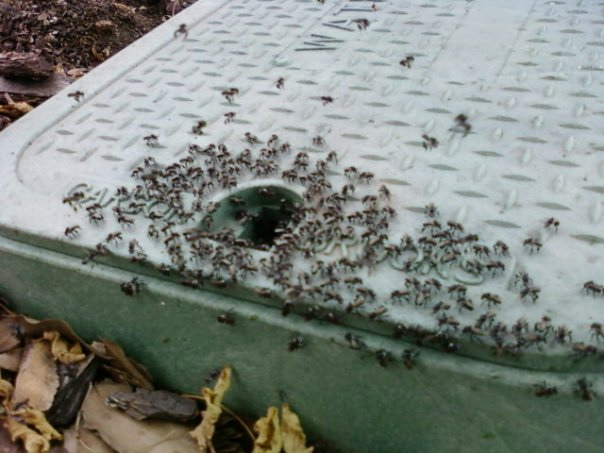What Are Australian Stingless Bees?
February 10, 2018
Bee colonies are extremely organized, with the various types of bees all serving a roll. It is that structure that leads to those glorious jars of liquid gold in your pantry.
With so many species of bees living on our planet, it is no wonder there are also a wide variety of beehives they make. One beehive that is immediately recognizable as the Tetragonula Carbonaria, more commonly known as Sugarbag Bees, create an upward spiral when they make their hives.
While these stingless bees are very close to the bumble bee, carpenter bee, honeybee, orchid bee, there are some notable differences. They are native to Australia and live primarily in tropical habitats in both the eastern and northern parts of the country.
Compared to other bees, they are both small in stature and in the amount of honey they harvest. The physical appearance of the bee is black with the face and sides having white fur. A full grown sugarbag bee only measures about 1/6 of an inch. A hive will only make about four cups of honey every year.
Stingless bees naturally look to create their nests in rock crevices, hollow trunks, and tree branches. What makes them truly unique, though, is how they actually construct their hives. They build the cells within the hive in batches of 80. They then fill the cell most of the way, at which point the queen will lay her eggs to fill the cell the rest of the way. When the queen is done laying her eggs, the worker bees return to the cell to seal it up. As far as the honey the produce, it tends to have a stronger, floral flavor, as the bees tend to feed on the same type of flowers.
While experts are not completely sure why the sugarbag bees construct their hives this way, there are a couple of theories. First, it may make it easier for the queen to navigate her way around the hive. Second, it could also lead to better air circulation. Compared to other types of hives, this is by far better ventilated.
And, don’t think because they don’t have a stinger they cannot defend themselves. While they can’t sting, they can bite. These bees inject a formic acid into their enemies that serves an in irritant to fend off threats.
Photo Courtesy of Simon Brown via Creative Commons License


.jpg)



